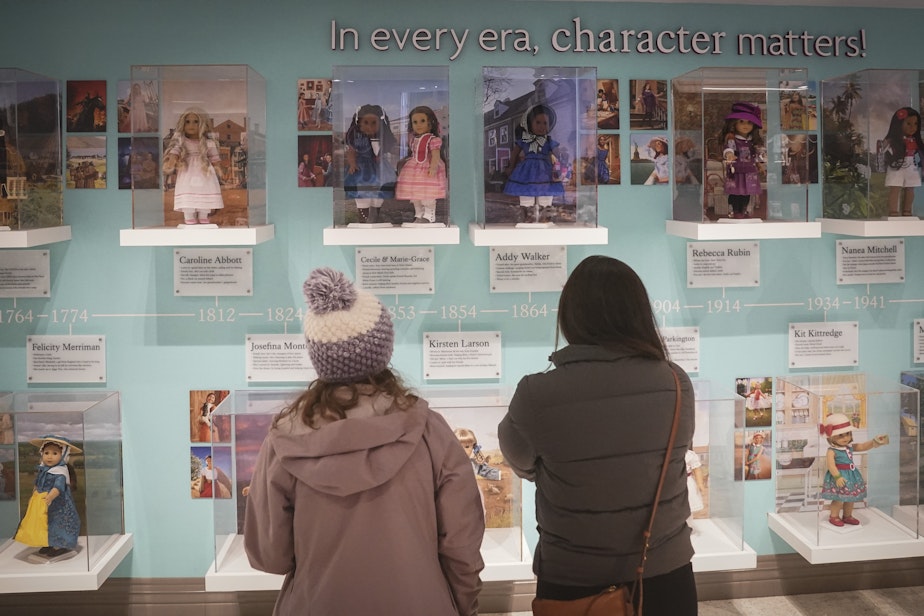Representation sold separately: New American Girl dolls overlook Seattle's diversity

When the toy company American Girl unveiled two new dolls in February, Y2K era Seattle officially became the latest period of American history packaged for sale — with accessories sold separately, of course.
The characters Nicki and Isabel are twin sisters living in Seattle in the year 1999. They have a dial up computer, a mom who works in tech, and an inflatable chair in their shared bedroom that looks like it was ripped straight out of a Delia’s catalog.
For Soundside producer Noel Gasca, these dolls prompted her to think about who gets to represent Seattle — even in doll form — and reexamine her own relationship with her favorite childhood toy.
It's weird to care so much about a couple of dolls, but I do.
A few weeks ago, I was scrolling through TikTok when I hit a streak of videos of people reacting to these new American Girl dolls.
"Offended that 1999 is considered historical," one TikTok user said. "Thisis a reminder if you are born in the 1990s or before, use your retinol."
"Were historical now — we're history," another user said. "They're going to tell the tales of the Backstreet Boys, and NSYNC, and Britney Spears."
I did more digging and found out that the characters actually lived in Seattle, and their backstory was like a Mad Libs of 1990s Seattle stereotypes: Isabelle loves to play tennis under the Space Needle; Nikki listens to alternative rock and makes zines. Their mom works in tech and is preparing for the Y2K Glitch and their dad used to be in a grunge band but now runs an independent coffee shop.
Sponsored
It's easy for me to roll my eyes at this now. But if I were a kid today, I would have lost my mind if I found out that American Girl was going to be releasing two new dolls from Seattle. But as an adult, the more I watched the TikToks, read the quippy articles, and saw the memes about how Nicki and Isabel should definitely be rocking WTO shirts, the more I began to question not just how American Girl wanted to represent this period of Seattle's history, but it made me think a lot about who gets to represent Seattle.
Nikki and Isabel are both white characters, and they join a long line of other white dolls in American Girl's lineup. For most of its history, American Girl hasn't had the best record of representation. When the company unveiled its original three dolls in 1986, they were all white. Over the years, the company did add a few dolls of color.
Growing up, I had two American Girl dolls: Samantha and Molly. I picked them because I found their books the most interesting, and because they both had brown hair and were raised in untraditional family structures like me. But that's where our similarities stopped. Neither of those characters had a Mexican American background like me. When I was into American Girl dolls, there was only one Latina character — her name is Josefina.
Josefina was cool, but I couldn't relate to her. She lived on a ranch with a pet goat, and she wanted to grow up to be a healer. Her character felt so distant. I wasn't a Mexican-American girl growing up in New Mexico in 1824 — I was growing up in the early 2000s in Lake Stevens, Washington. I didn't want to be a healer — I wanted to be an artist and learn how to skateboard.
It was my first interaction with a message I would absorb from different types of media for most of my childhood and young adulthood: Our stories and our backgrounds can be included, but only within the confines of a historical box.
Sponsored
I would have done countless chores and saved the money from every birthday card to get an American Girl doll who was just a little more like me, and was just a few decades — and not over a century — away. I think that's why it was so frustrating to see American Girl choose to explore this period of Seattle's history through a lens of whiteness, again, as if people of color didn't exist in the Pacific Northwest until the start of the new millennia.
Listen to the full story above.





